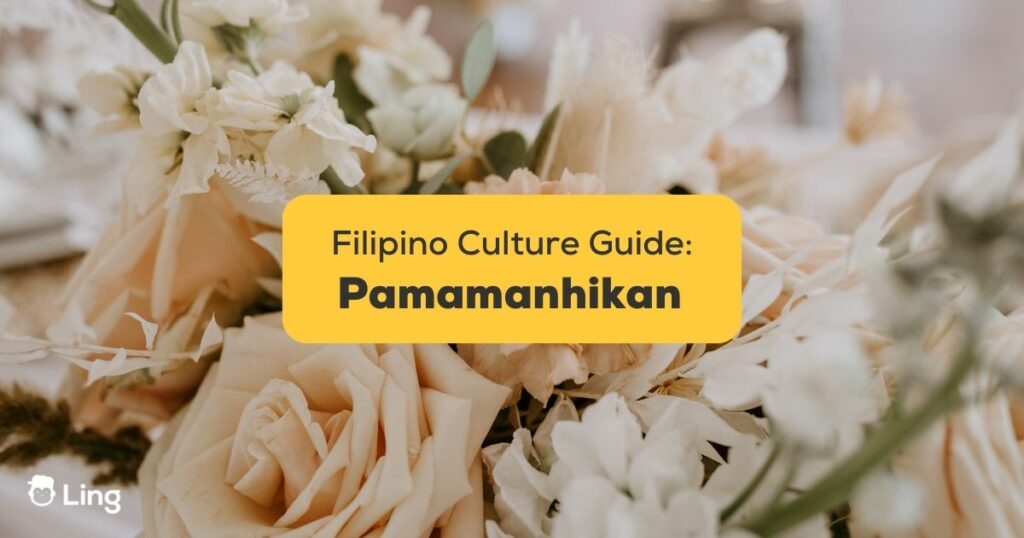Pamamanhikan. You may have heard your Filipina girlfriend mention this unique word when wedding planning comes up in conversation. What exactly does it mean?
If you’re an expat with a Filipina fiancée, you’re probably both enthralled and just a little nervous about all the Philippine wedding customs you need to know about. I get it – we certainly have some particular ways of kicking off marriage here!
One tradition that everyone getting hitched in this country needs to brace themselves for is the Pamamanhikan. Basically, it’s when the groom and his nearest and dearest make the journey to the bride’s hometown to formally ask her family for permission to marry her. It’s definitely much more meaningful than just popping the question on your own!
This custom might sound simple, but it comes with its own set of rules and intricacies that I know baffle plenty of visitors to our shores. How are you supposed to act? What if you accidentally offend your hopeful bride’s protective grandmother? Are you meant to turn up with a giant roast pig as a gift??
Fear not, my friends. In this blog, I’m breaking down everything there is to know about the Pamamanhikan tradition for clueless but very willing grooms-to-be. Consider me your personal guide into this integral part of the Philippines wedding culture. I’ll also let you in on some Tagalog words to truly help you unpuzzle this tradition.
Table of Contents

What Is Pamamanhikan?
Pamamanhikan translates literally to “the act of going to ask” or “the act of inviting oneself over,” – which should give you a hint about what’s about to go down.
It’s a longstanding Filipino tradition practiced all over the islands when two people decide to tie the knot. The would-be groom rocks up to his fiancée’s family home with his own parents and extended familia in tow. Their mission? To formally ask her family for her hand in marriage.
It’s easy to see why so many guys find the concept just a liiittle bit terrifying! But it’s an incredibly meaningful tradition that shows utmost respect towards the bride, her family, and their blessings. Most Filipina women would be quietly disappointed to miss out on the ceremony these days, even if they put on a brave face about it!
It usually goes down 1 to 2 months before the wedding itself. The point is to bring the two clans together under one roof to mutually agree: “Yes, we approve of this upcoming marriage.” It’s about connecting the families, not just the bride and groom.
Make no mistake, though – as much warmth and merriment flows during Pamamanhikan, it’s still treated solemnly. Imagine everyone on their absolute best behavior!
What Happens During The Pamamnhikan?
When the groom’s entourage reaches his fiancée’s home, they all perform the classic Filipino gesture of “Mano Po” – taking the elders’ hands gently to the forehead as a sign of respect.
Next comes the formal proposal announcement. The groom’s spokesperson (usually someone well-spoken, like an uncle or family friend) makes a charming speech. He solemnly outlines the groom’s honorable intentions, asks for the bride’s hand on his behalf, and requests both family’s blessings. The bride’s parents give their ecstatic approval (no pressure!).
With the logistics of the marriage request taken care of, the mood tends to lift. Now everyone mingles! It’s joyful and relaxed as both sides chat, joke around, and start forging relationships. Food and drinks help break the ice too.
Later on, the elders reconvene to finely comb through all the wedding details and plans. They confirm guest lists, event schedules, paperwork to file, living arrangements, finances, and assets to share – all the operational stuff. Any questions or uncertainties get hashed out here.
After hours of negotiations, the final deed is done! Everyone raises a glass in a toast welcoming the approaching union of the brightly blushing bride and groom. Camera flashes pop. Rowdy uncles laugh heartily and sneak cigars. Aunties hug and gossip about pregnancy timelines. And just like that, Pamamanhikan comes to a harmonious, merry close.

What To Bring For The Pamamanhikan?
Now comes the fun part – presents! What should you bundle up in that gift basket of yours to impress your hopeful in-laws-to-be?
Food is absolutely paramount. I hope you brushed up on your cooking skills or have a few pesos handy! Sweet local delicacies like bibingka (coconut rice cakes), suman (sticky rice rolls), and salted eggs are hugely appreciated. Never show up empty-handed – it hints you’re not taking this seriously.
Wine and spirits also tend to smooth the merriment along. Pricey bottles of whiskey or Armagnac that wealthy elders enjoy show you spare no expense for their beloved daughter. Just don’t get too tipsy yourself!
Beautiful flower arrangements brighten up the occasion too. Expert tip: find out the mother’s favorites ahead of time! An assortment of asters, roses, and sampaguitas, plus a standing wreath or bouquet, makes perfect gifts your hopeful mother-in-law will fawn over.
And we can’t forget the ring! Splurge on the shiniest rock in your wallet allows for your glammed-up fiancée. Keep the band and setting modest, though – you’re expected to replace it with the real wedding ring later on anyway.
Do Filipinos Accept Dowry During The Pamamanhikan?
This is a great question! And the short answer is – it’s complicated.
The concept of dowry, as many Westerners understand it, doesn’t quite exist here. But make no mistake, money and assets changing hands in the marriage process still happen on the sly. It’s just more subtle and polite, with lots of dancing around the implications.
Old-fashioned expectations linger that the groom pays a sort of “bride price”. It’s frowned upon to openly propose it though. Instead, his family simply parades into Pamamanhikan armed with lavish presents and hints galore about his lucrative career path.
The bride’s folks take stock and make gentle counteroffers if they feel the deal lacks luster. Face must be saved after all! Any haggling is couched as “securing financial stability” rather than them sizeably profiting off their precious daughter.
Some upwardly mobile modern families may politely dodge talk of dowries altogether nowadays. But be wary that even cosmopolitan parents might still discreetly hope for an abundance of gifts, property investments, or paid-for house remodels in lieu of bank transfers!
I should note that in some more traditional provinces and among Muslim Filipino communities, upfront dowry expectations can be more overt. Families openly state a payment (in money or possessions) required to marry their daughters. In these cases, it certainly isn’t cloaked!

Easy Tagalog Phrases For Pamamanhikan
I know learning another language just for a single tradition seems daunting. But showing you made some effort with Tagalog sincerely touches Filipino families’ hearts.
Trust me, scattering just a few very basic phrases smoothly into the conversations makes everyone swoon. You’ll stand out as trying to embrace our ways, not bulldoze over them.
Magandang umaga po – Good morning
Kick off your introduction on the right foot with this cheerful morning greeting showing respect. Flash those pearly whites, and don’t forget the subtle head nod!
Salamat po – Thank you
Graciously accept any refreshments offered and show your manners by sprinkling this phrase around generously. Goes a long way!
Kamusta po kayo? – How are you?
Break the ice with small talk by politely inquiring about your hopeful in-laws’ health and well-being. Make sure to make eye contact and listen attentively!
Masaya po akong makilala kayo – Pleased to meet you
You’ll be meeting oodles of aunties, uncles and lolo/lolas. Smoothly introduce yourself to each new face with this handy line as you go around shaking hands.
Maraming salamat po! – Thank you very much!
Stand up, raise your glass, and joyfully toast your successful Pamanamihikan with effusive thanks to all. Then down that bubbly!
Ready To Get Hitched?
And there you have it, friends! We’ve gone through the whole marvelous shebang of what Pamamanhikan entails, and now you’re ready to request your bride’s hand yourself.
Wedding traditions might sometimes seem fussy or excessive, especially to many no-fuss foreigners. But I sincerely believe Pamamanhikan sets up couples starting new lives together for success. You kickstart your union already blessed by both immediate and extended families – what better foundation!
For even more insider-only advice about dazzling your fiancée’s folks at Pamamanhikan success, be sure to check out the language lessons inside the Ling app. Inside, the native speakers and language experts curated special lessons to help you uncover everything you need to know about the Tagalog language and the Philippines.



































































